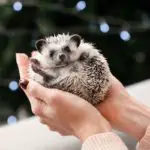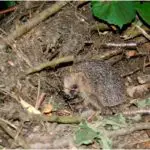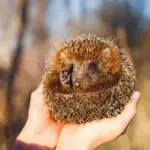No, they’re completely different. Thank you for coming to our TED Talk.
You want more?
OK, let’s break things down a little.
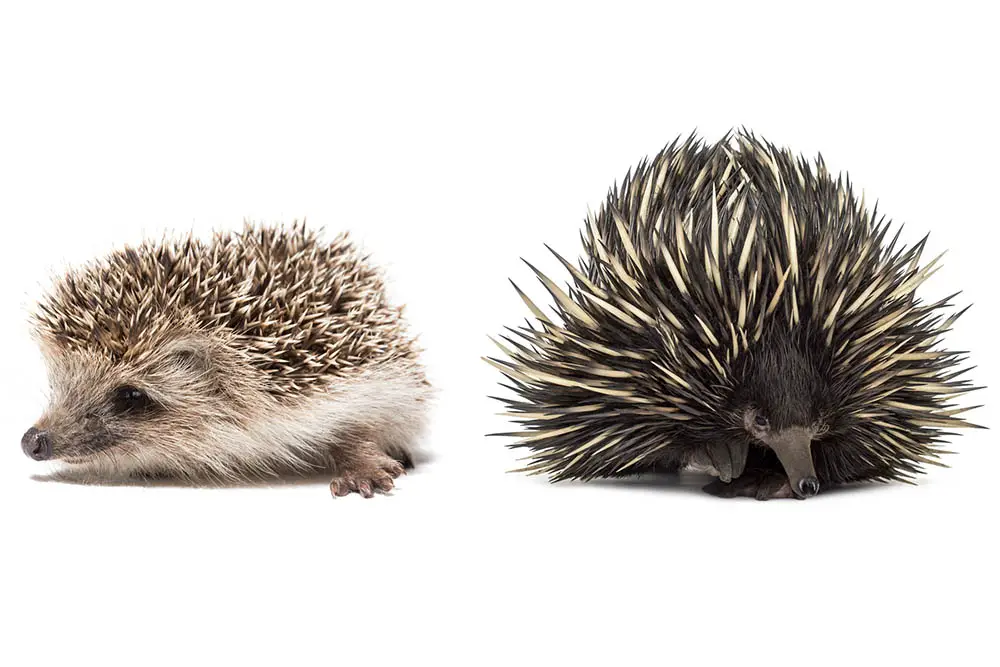
In terms of its official classification, the hedgehog is a small spiny mammal in the sub-family known as Erinaceinae, in the eulipotyphlan family Erinaceidae.
The Echidna on the other hand is itself the name of a sub-family, within the larger family, Tachyglossidae.
In fact, there are four remaining species of Echidna and, with the addition of the platypus, they remain the only examples of mammals that lay eggs, rather than live young.
Beyond a passing physical resemblance, the hedgehog and the echidna have very little in common.
The physical resemblance is a case not of shared genetics or ancestry, but of convergent evolution – different creatures on different landmasses evolving similar solutions to similar evolutionary challenges.
In the case of the echidna and the hedgehog, the challenge they have in common is mostly tied up with the protection of potentially vulnerable soft bodies from predators.
Growing spines or quills worked for both creatures, and has become one of the most immediately identifying features about them both.
The convincing coincidences
There are other similarities too, all of which underline an initial visual similarity – both species curl up into a ball to defend against predators, and both hibernate, so the idea that they’re relatives of the same species is very easy to believe.
But they evolved and live on different continents – the echidna in Australia, and hedgehogs in Europe, Asia, and Africa.
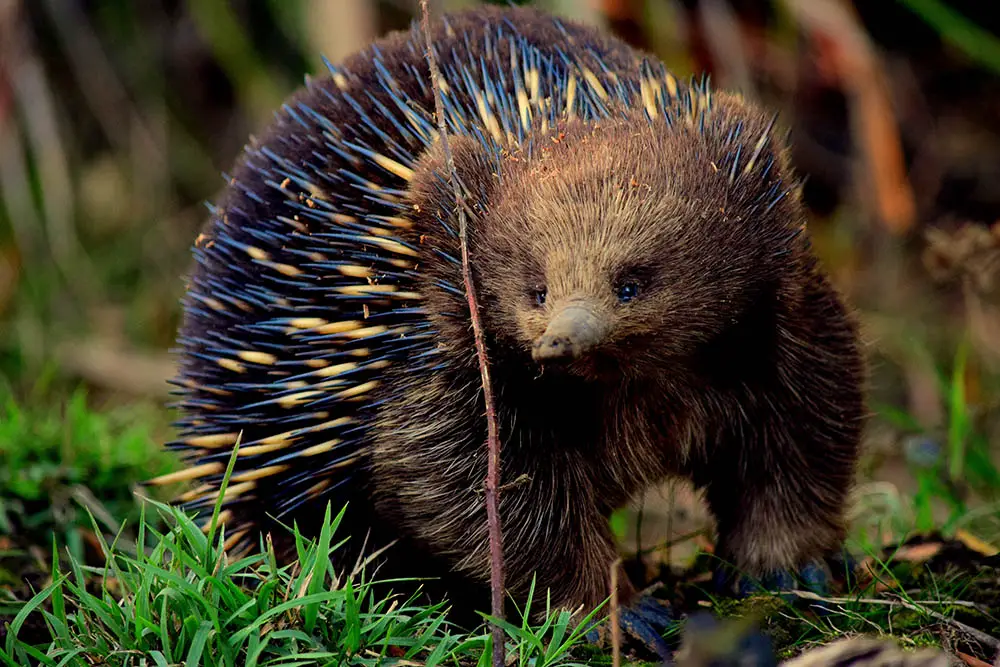
While hedgehogs were long classified as insectivores (the classification is no longer in use), they’re technically omnivorous, and will eat both plants, insects, and small creatures like snails and slugs if they get the chance.
The diet of echidna differs between the long-nosed variety, which mostly feeds on insects and termites, and the short-nosed variety, which feeds mostly on worms.
Their evolutionary descent is significantly different – the echidna is descended relatively recently (20-50 million years ago) from an ocean-going species, but has learned to adapt over time to life on land.
Hedgehogs on the other hand evolved around 15 million years ago. That may not seem like much of a difference, but still, 5 million years between species on entirely different parts of the Earth is more than an inconvenience if you’re trying to imagine them as related, let alone the same animal.
The ID parade
The overall length and weight of the two animals are different, too. Echidna typically grow to between 14-30 inches, nose to tail, and can weigh anything from 5.5 pounds up to an impressive 22 pounds.
Hedgehogs generally are rounder and squatter, around 9-10 inches in length and with a squatter, rounder weight distribution.
The sticky business
Echidna still produce eggs as young. Hedgehogs give birth to litters of live young.
The mating ritual in echidna amounts to a kind of “train,” with males lining up and following the female until her body is ready to mate. The mating ritual in hedgehogs is more a one-to-one affair of huffs and grunts and circling, with other males sometimes having to be warned off – or fought off – for the right to mate.
And without getting too appallingly graphic, the actual mating is distinctly different, too.
Male echidna have four-headed penises, with two of the heads “shutting down” at mating time, leaving two to grow bigger, in the hopes of fitting inside the female’s two-branched reproductive channel. Male echidna also alternate which heads to shut down, to improve the chances of fertilization.
With hedgehogs, once all the head-butting and huffing and shoving is done, the actual act of mating is relatively… careful… business, but the hedgehog has only one apiece of all the necessary body parts.

We’re not saying this is the most appropriate way to tell an echidna from a hedgehog – that would be checking which continent you’re standing on when you spot them.
But if you’re desperate to know which is which, and you don’t mind the collateral stabbings of a whole bunch of spines or quills, then taking a long, hard look at the genitals of the spiky thing in front of you is certainly, at least, an option.
Disclaimer: we cannot be held responsible if the spiky thing you’re examining sees fit to pee on you. In all fairness, it’s probably what we’d do in their place.
The power of teeth
If your spiky thing of choice sinks its teeth into your thumb while you’re looking at its reproductive organs – congratulations! What you have there is a hedgehog.
How can we be certain? Simple – an echidna has no teeth. It smushes its insect, termite, or worm food source between the plates of its mouth, but it has no dental weaponry with which to ward off an attacker. You can put it down now and stop showing so much interest in its genitals.
Besides, you may want to get to an ER – hedgehogs are notorious for their ability to catch, but not necessarily die from serious diseases which can be communicated to humans.
That’s at least part of the reason why their entry into the US is relatively limited and controlled – if they were to become an indigenous species again (they did exist in North America originally, but they died out), the risk of those diseases becoming common with them is pretty high.
So, just to recap how you can tell whether the spiky thing in front of you is an echidna or a hedgehog:
1. Where are you standing, and in what environment? Hedgehogs and echidna are native to very different countries with quite an impressive amount of ocean in between them, so if you’re in the wild, the ready reckoner is: Is this Australia? If not, it’s probably a hedgehog.
2. If it’s in a domestic setting and you can’t wait around till mating season to see what happens, take a look at its body length and weight distribution. Longer and less plump-looking? Call it an echidna. Small, unbearably cute, and plump-looking? Hedgehog!
3. Wait till feeding time at least – see what it eats. While the hedgehog will eat anything, the echidna is more set in its dietary ways. And you should be able to safely tell whether it has teeth like a hedgehog or gums like an echidna.

